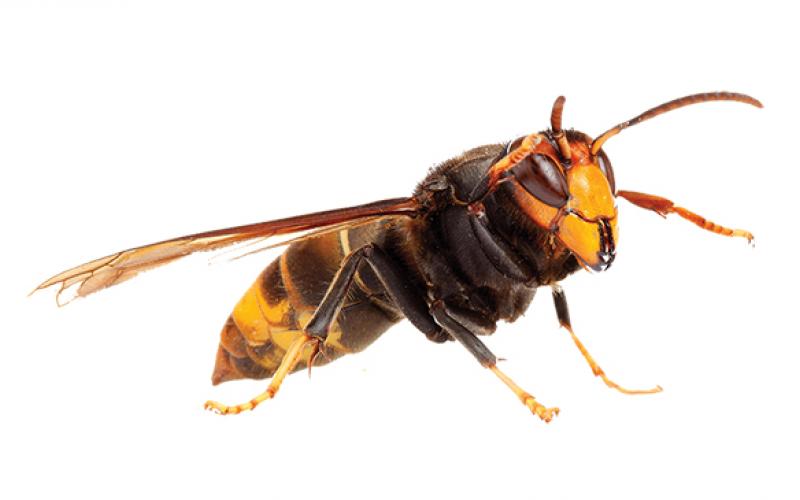Murphy – If you see any large wasps hovering around your house as the weather warms up, don’t be overly alarmed.
Reports of the Asian giant hornet (Vespa mandarinia) or “murder hornets” spreading to the United States took the news cycle by storm earlier in the spring. However, according to the N.C. Cooperative Extension Cherokee County Center, any sighting of the invasive insects in this area is simply a case of mistaken identity.
Keith Wood, the agriculture agent, said that the extension center has received quite a few calls over the past few weeks from county residents claiming to have sighted the Asian giant hornet buzzing around their properties. These reports are most likely sightings of another species of invasive hornets that made Cherokee County home in the past, the European hornet.
The European hornet, which can grow to a size (1½ inches for workers) similar to the Asian giant hornets (also 1½ inches for workers), has distinct features that can be used to distinguish it from the “murder hornets,” including the color of its head and thorax.
According to an article published by N.C. State Extension, the Asian giant hornet has a head that is almost entirely yellow-orange colored with a dark thorax – the body section where the wings and legs attach – while the European hornet has a reddish-brown head with a more colorful thorax and wide yellow markings. The eyes of an Asian giant hornet are also much larger than the European hornet.
The Asian giant hornet has only been confirmed to have been found in the Pacific Northwest in Washington state and British Columbia, Canada. Osama El-Lissy, an official with the U.S. Plant Protection & Quarantine Program, told the Associated Press on Friday, “At this time there is no evidence that Asian giant hornets are established in Washington state or anywhere else in the United States.”
Image
Body

